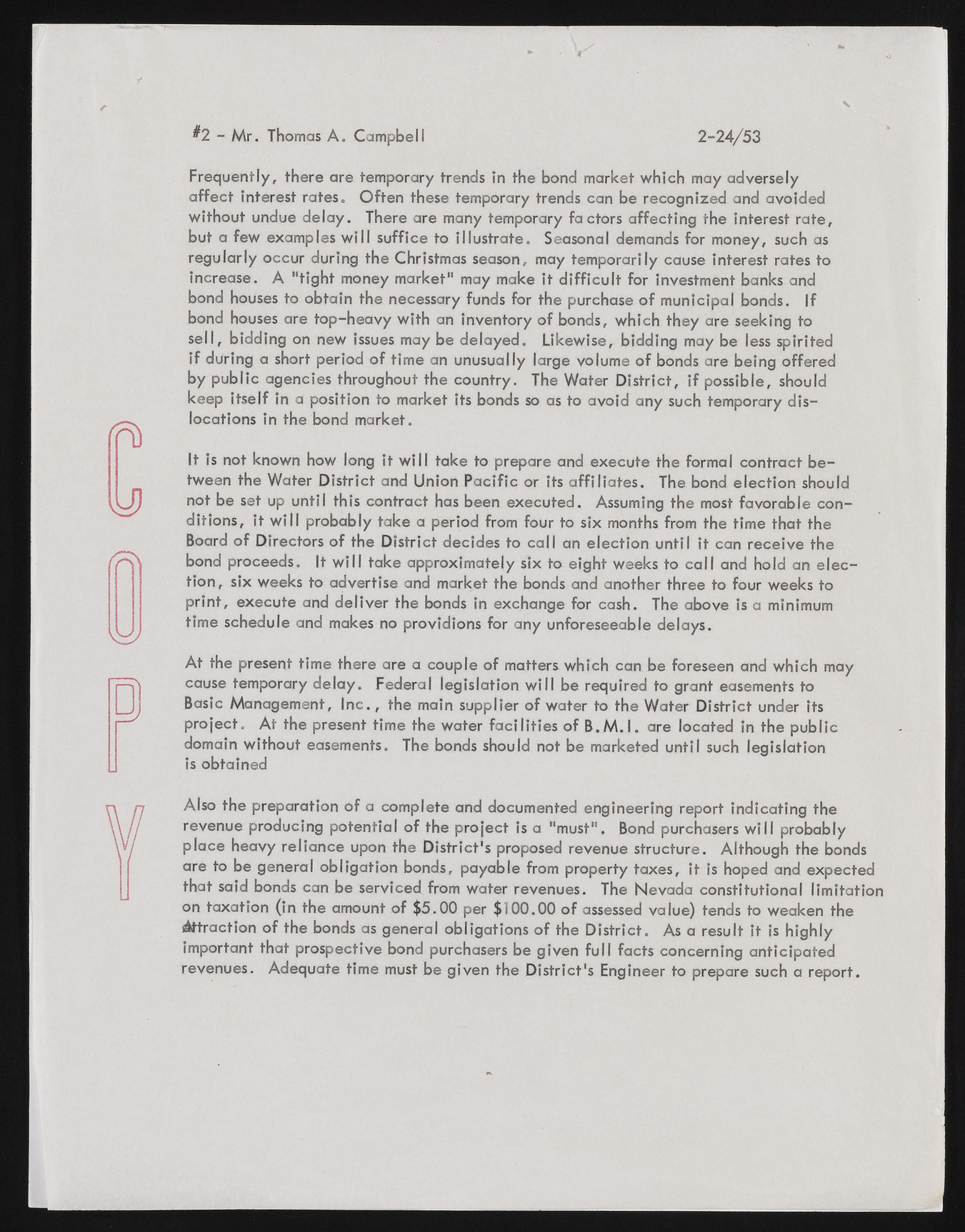Copyright & Fair-use Agreement
UNLV Special Collections provides copies of materials to facilitate private study, scholarship, or research. Material not in the public domain may be used according to fair use of copyrighted materials as defined by copyright law. Please cite us.
Please note that UNLV may not own the copyright to these materials and cannot provide permission to publish or distribute materials when UNLV is not the copyright holder. The user is solely responsible for determining the copyright status of materials and obtaining permission to use material from the copyright holder and for determining whether any permissions relating to any other rights are necessary for the intended use, and for obtaining all required permissions beyond that allowed by fair use.
Read more about our reproduction and use policy.
I agree.Information
Digital ID
Permalink
Details
More Info
Rights
Digital Provenance
Publisher
Transcription
^2 - Mr. Thomas A. Campbell 2-24/53 Frequently, there are temporary trends in the bond market which may adversely affect interest rates. Often these temporary trends can be recognized and avoided without undue delay. There are many temporary factors affecting the interest rate, but a few examples will suffice to illustrate. Seasonal demands for money, such as regularly occur during the Christmas season, may temporarily cause interest rates to increase. A "tight money market" may make it difficult for investment banks and bond houses to obtain the necessary funds for the purchase of municipal bonds. If bond houses are top-heavy with an inventory of bonds, which they are seeking to sell, bidding on new issues may be delayed. Likewise, bidding may be less spirited if during a short period of time an unusually large volume of bonds are being offered by public agencies throughout the country. The Water District, if possible, should keep Itself in a position to market its bonds so as to avoid any such temporary dislocations in the bond market. It is not known how long it will take to prepare and execute the formal contract between the Water District and Union Pacific or its affiliates. The bond election should not be set up until this contract has been executed. Assuming the most favorable conditions, it will probably take a period from four to six months from the time that the Board of Directors of the District decides to call an election until it can receive the bond proceeds. It will take approximately six to eight weeks to call and hold an election, six weeks to advertise and market the bonds and another three to four weeks to print, execute and deliver the bonds in exchange for cash. The above is a minimum time schedule and makes no providions for any unforeseeable delays. At the present time there are a couple of matters which can be foreseen and which may cause temporary delay. Federal legislation will be required to grant easements to Basic Management, Inc., the main supplier of water to the Water District under its project. At the present time the water facilities of B .M .I. are located in the public domain without easements. The bonds should not be marketed until such legislation is obtained Also the preparation of a complete and documented engineering report indicating the revenue producing potential of the project is a "must". Bond purchasers will probably place heavy reliance upon the District's proposed revenue structure. Although the bonds are to be general obligation bonds, payable from property taxes, it is hoped and expected that said bonds can be serviced from water revenues. The Nevada constitutional limitation on taxation (in the amount of $5.00 per $100.00 of assessed value) tends to weaken the Attraction of the bonds as general obligations of the District. As a result it is highly important that prospective bond purchasers be given full facts concerning anticipated revenues. Adequate time must be given the District's Engineer to prepare such a report.

